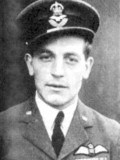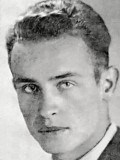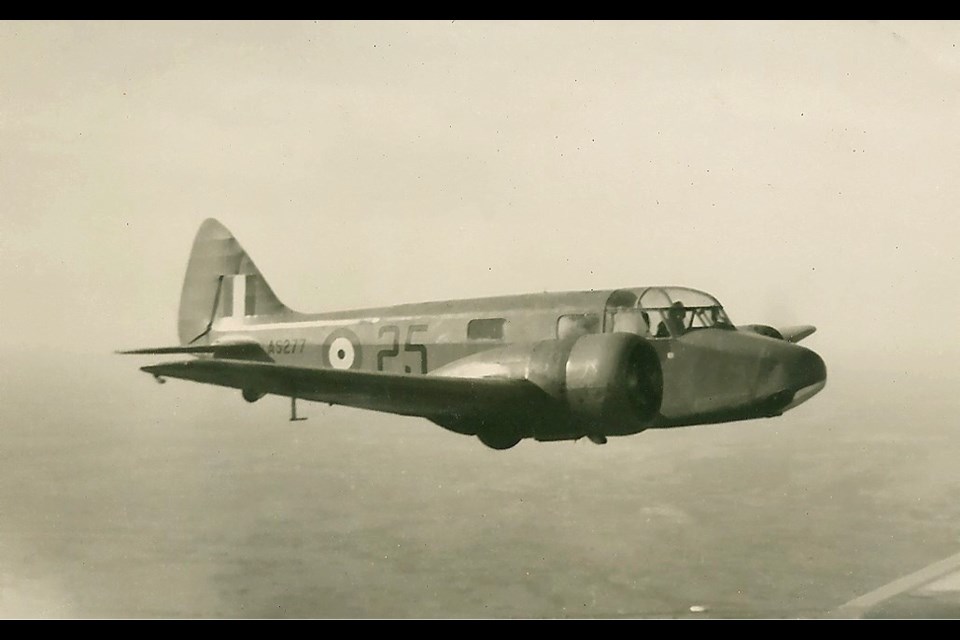During World War Two men came from around the world to train as aircrew at Saskatchewan air bases. Some came from Czechoslovakia. Two Czechoslovakian airmen never made it back home. They were killed on July 8, 1943 in a training accident at #32 Service Flying Training School (Moose Jaw), and are buried in the Rosedale Cemetery. The men died during pilot training when two, twin engine Oxford Airspeeds crashed into each other.
What is today the 15 Wing Base (RCAF), south of Moose Jaw, was, in 1943, a Royal Air Force Service Flying Training School. The primary role of all such schools was advanced pilot training.
Future pilots completed the first step in pilot training at an Elementary Training Flying School. There they learned to fly small aircraft, usually the Tiger Moth. After eight to twelve hours of dual control training the student Pilot would solo. Completing Elementary Training took approximately forty-five hours at the controls of a Tiger Moth or similar small airplane. The trainee pilot then advanced to a Service Flying Training School and learned to fly larger, more powerful aircraft.
Number 32 SFTS at Moose Jaw provided pilot training on the famous yellow, North American Harvard and also, on twin-engine aircraft. At Moose Jaw, the most common twin engine training aircraft was the Oxford Airspeed.
July 8, 1943 – 80 years ago, a tragic day. Four airmen were killed.
On July 9, 1943 the Moose Jaw Times Herald reported, “Two Royal Air Force instructors and two pupil pilots of Number 32, Service Flight Training School (RAF) at Moose Jaw, were instantly killed Thursday noon when two training planes crashed in the air eight miles south of the station…”. In terms of lives lost, this was one of the most ‘costly’ flying accidents at #32 S.F.T.S.
It is believed services were held at the Anglican Church on High Street East. The coffins of all four men arrived and departed the church on a flat bed truck.
The accident involved Oxford Airspeed aircraft # AS 625 and Oxford AS #229.
Killed in Oxford AS 625 were:
Instructor: Pilot Officer Benedikt B. Blanty, DFM, RAFVR S/N 118740, (Czechoslovakia Air Force # 787448), born Born March 21, 1914 at Lovcice (Velke Lovcice) u Kyjova CZ.

Student: LAC Svatopluk Maly, Age 21, RAFVR, s/n 788331 (Czechoslovakia), son of Mr. and Mrs. F. Maly, of Krelon, Czechoslovakia.

Instructor: Flying Officer George Moffat Urwin, Age 22, RAFVR, # 134153, son of Alexander Birkbeck Urwin and Eleanor Lily Urwin, of Fawdon, Newcastle-on-Tyne, England
Student: LAC Alfred Charles Channon, Age 21, RAFVR, # 1339156, son of William and Emily Channon, of Durrington, Wiltshire, England
The men are buried at the Moose Jaw Rosedale Cemetery in sequential graves at Lot 8, Block 10, Graves 236, 237, 196 and 197.
Possible Cause of Accident
It is not clear exactly what caused the accident. The accident occurred at noon and both aircraft were preparing to land when they collided.
The twin-engine Oxford Airspeed monoplane was developed during the 1930s as an eight seat commercial aircraft. In 1937, the Royal Air Force selected it as a great little general purpose trainer that could be used to train for several aircrew positions. At #32 SFTS Moose Jaw its primary use was Pilot training.
Based on the aircraft serial number this photo was probably taken over Moose Jaw.
The “Ox-Bow” (Oxford Airspeed) had some interesting features. The propellers were solid wood, not variable pitch, but the cockpit had a ‘dummy’ ‘coarse’ and ‘fine’ switch for a variable pitch propeller that the trainee pilot had to use for landing and takeoff.
Visibility from the cockpit was outstanding – except for the large engine cowlings. As can be seen in the photo of a nose-down Oxford Airspeed, the cowling can easily mask another aircraft below, at an angle and moving at about the same speed. This, combined with possible problems from a bright sun may have been the main factors in the crash.
Example of Obscured Vision
This crashed Oxford AS was NOT involved in the crash. The photo shows how the engine cowlings obscure vision from the cockpit side window, looking down to the port or starboard.




